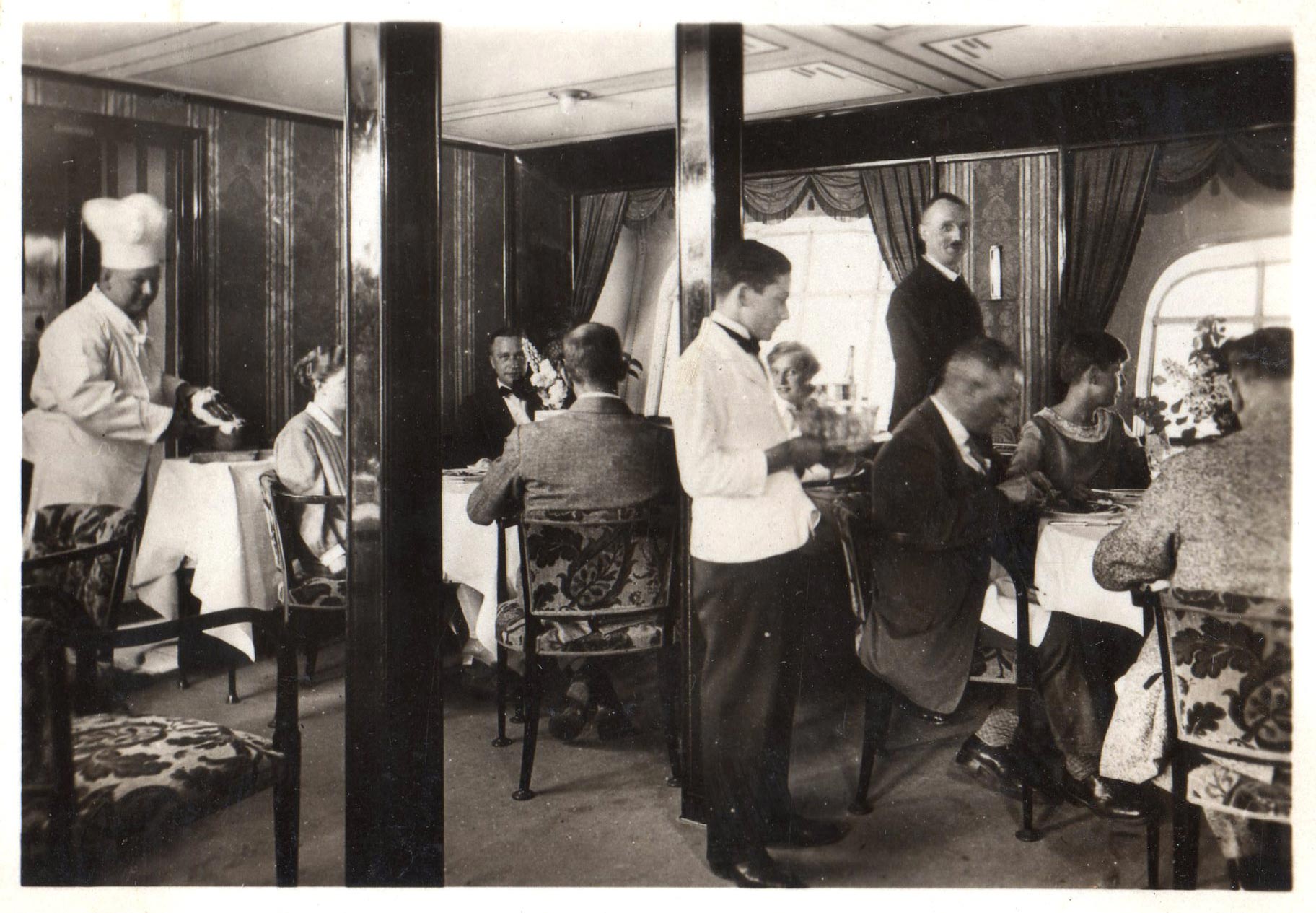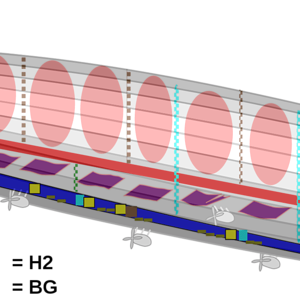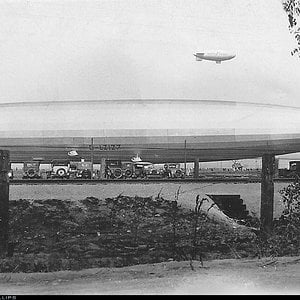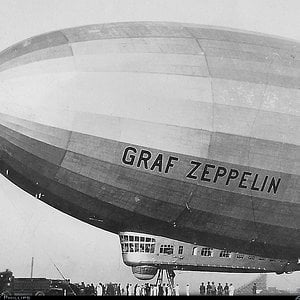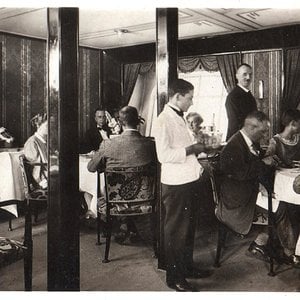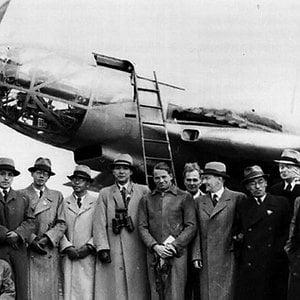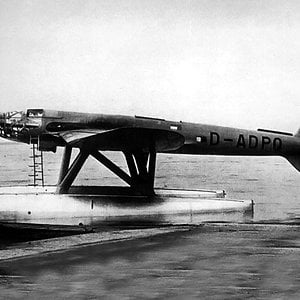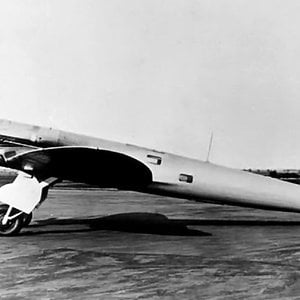Navigation
Install the app
How to install the app on iOS
Follow along with the video below to see how to install our site as a web app on your home screen.
Note: This feature may not be available in some browsers.
More options
You are using an out of date browser. It may not display this or other websites correctly.
You should upgrade or use an alternative browser.
You should upgrade or use an alternative browser.
The end of the LZ 127 and commercial airship service
The loss of the D-LZ 129 Hindenburg at Lakehurst on May 6, 1937 shattered public faith in the safety of hydrogen-filled airships making the continuation of their commercial passenger operations unsustainable unless the Graf Zeppelin and the still under construction LZ 130 Graf Zeppelin II could convert to non-flammable helium, the only alternative lifting gas for airships. Unlike the relatively inexpensive and universally available hydrogen, however, the vast majority of the world's available supplies of the much more costly, less buoyant, and harder to produce helium (it is an extracted byproduct of mined natural gas) were controlled by the United States. Since 1925, the exportation of helium had also been tightly restricted by Congress although there is no record that the German Government had ever applied for an export license for helium to use in its airships prior to the Hindenburg's crash and fire.[61]
Although much safer than hydrogen, the greatly added expense, lack of availability, and overall degradation in lifting performance that converting to helium would impose on the Graf Zeppelin made its continued operation no longer commercially viable. That being the case, one day after the "Hindenburg" crashed in Lakehurst the nine year old LZ 127 was promptly grounded and withdrawn from service upon its arrival in Friedrichshafen on a flight from Brazil on May 8, 1937. Six weeks later on June 18 the airship was ferried to Frankfurt am Main on what would prove to be its 590th and final flight. Upon arrival at its massive hangar at the Frankfurt airport, the airship was deflated and opened to the public as a museum.[62]
While the Graf Zeppelin had already been decommissioned and retired, shortly after the Hindenburg disaster President Roosevelt approved and forwarded a Cabinet report to Congress that supported the export to Germany of enough helium to permit the soon to be launched Hindenburg Class LZ-130 Graf Zeppelin II (which unlike the LZ 127 was designed to use either hydrogen or helium) to resume commercial transatlantic passenger service by 1939.[63] By early 1938, however, firm opposition by Interior Secretary Harold Ickes, formally made in his capacity of one of the six statutory members of the National Munitions Control Board, to a German request to purchase up to 10,000,000 cubic feet (280,000 m3) of helium would prove to make that impossible.[64]
Established by §5(a) of the Neutrality Act of May 1, 1937 (22 U.S.C. 441), the Board (which consisted of the Secretaries of State, War, Navy, Treasury, Commerce, and Interior), was vested by the Act with the ultimate authority to both prohibit the export to "belligerent states, or to a state wherein civil strife exists" of any type of "arms, ammunition, and implements of war" as well as restrict the transfer of any other "articles or materials" such as helium which the Government classified as having "military importance."[65]
At a White House press briefing on May 11, 1938, President Roosevelt's press secretary Stephen Early announced that as the Act required the "unanimous" consent of the Control Board to approve the export of helium to Germany, the President had concluded that he was "without legal power to override the judgment of any one of the six [members] and direct the sale of helium for export." In response to this statement, Dr. Eckener commented later that same day that "should this decision be final, I am afraid it means the death sentence for commercial lighter-than-air craft."[66]
Although the Graf Zeppelin II made 30 test, promotional, propaganda and military surveillance flights around Europe between the airship's launch in mid-September 1938 and its last flight 11 months later on August 20, made just 10 days before the formal start of World War II in Europe with the German invasion of Poland on September 1, 1939, the LZ 130 never entered the commercial passenger service for which it was built. The ultimate fates of both the original Graf Zeppelin (LZ 127) and the Graf Zeppelin II (LZ 130) were formally sealed on March 4, 1940, when German Air Minister Hermann Göring issued a decree ordering both to be immediately scrapped for salvage and their duralumin airframes and other structures to be melted down for reuse by the German military aircraft industry.[67]
The loss of the D-LZ 129 Hindenburg at Lakehurst on May 6, 1937 shattered public faith in the safety of hydrogen-filled airships making the continuation of their commercial passenger operations unsustainable unless the Graf Zeppelin and the still under construction LZ 130 Graf Zeppelin II could convert to non-flammable helium, the only alternative lifting gas for airships. Unlike the relatively inexpensive and universally available hydrogen, however, the vast majority of the world's available supplies of the much more costly, less buoyant, and harder to produce helium (it is an extracted byproduct of mined natural gas) were controlled by the United States. Since 1925, the exportation of helium had also been tightly restricted by Congress although there is no record that the German Government had ever applied for an export license for helium to use in its airships prior to the Hindenburg's crash and fire.[61]
Although much safer than hydrogen, the greatly added expense, lack of availability, and overall degradation in lifting performance that converting to helium would impose on the Graf Zeppelin made its continued operation no longer commercially viable. That being the case, one day after the "Hindenburg" crashed in Lakehurst the nine year old LZ 127 was promptly grounded and withdrawn from service upon its arrival in Friedrichshafen on a flight from Brazil on May 8, 1937. Six weeks later on June 18 the airship was ferried to Frankfurt am Main on what would prove to be its 590th and final flight. Upon arrival at its massive hangar at the Frankfurt airport, the airship was deflated and opened to the public as a museum.[62]
While the Graf Zeppelin had already been decommissioned and retired, shortly after the Hindenburg disaster President Roosevelt approved and forwarded a Cabinet report to Congress that supported the export to Germany of enough helium to permit the soon to be launched Hindenburg Class LZ-130 Graf Zeppelin II (which unlike the LZ 127 was designed to use either hydrogen or helium) to resume commercial transatlantic passenger service by 1939.[63] By early 1938, however, firm opposition by Interior Secretary Harold Ickes, formally made in his capacity of one of the six statutory members of the National Munitions Control Board, to a German request to purchase up to 10,000,000 cubic feet (280,000 m3) of helium would prove to make that impossible.[64]
Established by §5(a) of the Neutrality Act of May 1, 1937 (22 U.S.C. 441), the Board (which consisted of the Secretaries of State, War, Navy, Treasury, Commerce, and Interior), was vested by the Act with the ultimate authority to both prohibit the export to "belligerent states, or to a state wherein civil strife exists" of any type of "arms, ammunition, and implements of war" as well as restrict the transfer of any other "articles or materials" such as helium which the Government classified as having "military importance."[65]
At a White House press briefing on May 11, 1938, President Roosevelt's press secretary Stephen Early announced that as the Act required the "unanimous" consent of the Control Board to approve the export of helium to Germany, the President had concluded that he was "without legal power to override the judgment of any one of the six [members] and direct the sale of helium for export." In response to this statement, Dr. Eckener commented later that same day that "should this decision be final, I am afraid it means the death sentence for commercial lighter-than-air craft."[66]
Although the Graf Zeppelin II made 30 test, promotional, propaganda and military surveillance flights around Europe between the airship's launch in mid-September 1938 and its last flight 11 months later on August 20, made just 10 days before the formal start of World War II in Europe with the German invasion of Poland on September 1, 1939, the LZ 130 never entered the commercial passenger service for which it was built. The ultimate fates of both the original Graf Zeppelin (LZ 127) and the Graf Zeppelin II (LZ 130) were formally sealed on March 4, 1940, when German Air Minister Hermann Göring issued a decree ordering both to be immediately scrapped for salvage and their duralumin airframes and other structures to be melted down for reuse by the German military aircraft industry.[67]

